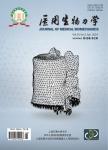Automatic Calcified Plaques Detection in the OCT Pullbacks Using Convolutional Neural Networks
Automatic Calcified Plaques Detection in the OCT Pullbacks Using Convolutional Neural Networks作者机构:The School of Biological Science and Medical EngineeringSoutheast UniversityNanjing210096China The Schoolof ChemistryPhysics and Mechanical EngineeringQueensland University of TechnologyBrisbaneQLD4000Australia Department of CardiologyAffiliated Drum Tower HospitalSchool of MedicineNanjing UniversityNanjing21000China
出 版 物:《医用生物力学》 (Journal of Medical Biomechanics)
年 卷 期:2019年第34卷第A1期
页 面:109-110页
核心收录:
学科分类:0831[工学-生物医学工程(可授工学、理学、医学学位)] 100207[医学-影像医学与核医学] 1006[医学-中西医结合] 1002[医学-临床医学] 1001[医学-基础医学(可授医学、理学学位)] 08[工学] 1010[医学-医学技术(可授医学、理学学位)] 100201[医学-内科学(含:心血管病、血液病、呼吸系病、消化系病、内分泌与代谢病、肾病、风湿病、传染病)] 100106[医学-放射医学] 10[医学] 100602[医学-中西医结合临床]
基 金:supported in part by the National Natural Science Foundation of China ( NSFC ) ( 11772093) ARC ( FT140101152)
主 题:Calcified plaque intravascular optical coherence tomography deep learning imbalance label distribution convolutional neural networks
摘 要:Background Coronary artery calcification is a well-known marker of atherosclerotic plaque ***-resolution intravascular optical coherence tomography(OCT)imaging has shown the potential to characterize the details of coronary calcification in *** routine clinical practice,it is a time-consuming and laborious task for clinicians to review the over 250 images in a single ***,the imbalance label distribution within the entire pullbacks is another problem,which could lead to the failure of the classifier *** the success of deep learning methods with other imaging modalities,a thorough understanding of calcified plaque detection using Convolutional Neural Networks(CNNs)within pullbacks for future clinical decision was *** All 33 IVOCT clinical pullbacks of 33 patients were taken from Affiliated Drum Tower Hospital,Nanjing University between December 2017 and December *** ground-truth annotation,three trained experts determined the type of plaque that was present in a *** experts assigned the labels no calcified plaque , calcified plaque for each OCT *** experts were provided the all images for *** final label was determined based on consensus between the experts,different opinions on the plaque type were resolved by asking the experts for a repetition of their *** the implement of algorithm,all OCT images was resized to a resolution of 300×300,which matched the range used with standard architectures in the natural image *** the study,we randomly selected 26 pullbacks for training,the remaining data were ***,imbalance label distribution within entire pullbacks was great challenge for various CNNs *** order to resolve the problem,we designed the following ***,we fine-tuned twenty different CNNs architecture,including customize CNN architectures and pretrained CNN *** the nature of OCT images,customize CNN architectures were des



